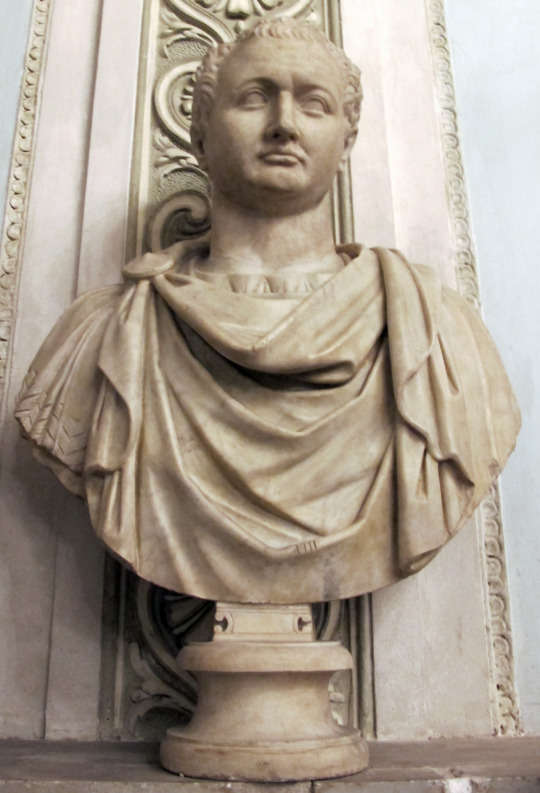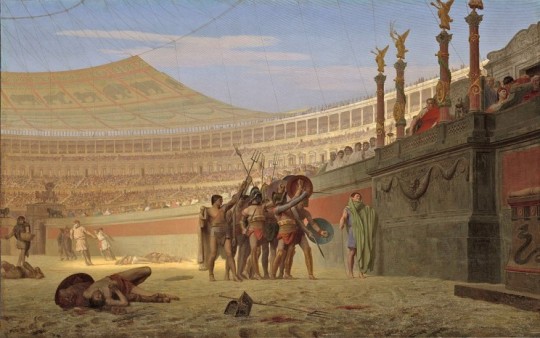classprojectone
5 posts
Don't wanna be here? Send us removal request.
Text

Construction for the Flavian Amphitheatre was to begin in 70 CE under the emperor Vespasian. The funding for the construction was provided by the ‘opulent spoils’ taken from the Jewish Temple after the Siege of Jerusalem; the First Jewish-Roman War. It is assumed that prisoners from the war were brought back to Rome to ‘assist’ in the construction of the amphitheater. The Colosseum was made sturdy with different materials: wood, tiles, cement, limestone, and mortar. The land was made flat after the deconstruction of much of the Domus Aurea, which stood adjacent to Colossus of Nero. The massive amphitheater was not finished in Vespasian’s lifetime, but his son Titus. Only the first three stories of the colosseum were built when Vespasian died; the rest under his son’s ruling.
The Roman Colosseum Flavian Amphitheatre can hold just over 50,000 spectators at one time. The seating was designed in a tiered pattern, which was also used in their social stature. There are over eighty entrances to the colosseum. The common citizens used most of the small entrances, but the more significant patrons used the grander and more elaborate entrances. There was a vast difference between the two. Like most stadiums today, there were seating tickets to help the arrangement of the seating. The colosseum is one of the largest and well-designed buildings in ancient and modern history. It is the inspiration for almost all grand stadiums and colosseums built today.
39 notes
·
View notes
Photo


Vespasian and his son Titus.
The very first person to order the use of the colosseum was Vespasian’s son Titus. Although Vespasian ordered the construction of the Flavian Amphitheatre, he died before construction could come to an end. Titus held the Inaugural Games of Flavian Amphitheatre soon after it was completed. The celebration began in 80 AD and soon came to a halt just months after the competition due to the eruption of Mount Vesuvius. A disastrous event that leads Rome to burn for three straight days and nights and the sweep of a scourge like plague. But after the events came to a crawl, he opened the gates with the first of many lavished games that lasted for more than one hundred days.
Titus’ time with the amphitheater was probably one of the most significant. Soon after the colosseum was finished being built, Mount Vesuvius caused significant damage to the structure. Destroying Pompeii, Stabiae, Herculaneum, and Oplontis.
The younger brother of Titus was a significant figure in the events held in the colosseum. He founded the Capitoline Games, a quadrennial contest of athletic displays, competition, music, and chariot racing. He added two factions to chariot racing, Gold and purple, to the already existing white, green, red, and blue.
Some other events significant to the Colosseum were the roman executions that were held under Emperor Claudius. It was scheduled as a part of the colosseum’s daily event. Between animal entertainment and gladiatorial combat. It was said that some of the executions far surpassed Rome’s projection of power straight into abuse. Claudius held executions for many enemies of the state; criminals, prisoner-of-war, deserters, etc.
0 notes
Text

To elaborate on Emperor Titus Vespasianus, he was the son of Vespasian, the original creator of the Flavian Amphitheatre. Titus was the one who finished the construction and oversaw the slight restoration after the eruption of Vesuvius. Titus was the first to have games and events held in the colosseum.
Animal entertainment was one big event that the Romans often found themselves captive to. It was said over the course of the inaugural games, more than nine thousand tamed and wild animals were killed for entertainment. No animal was discriminated against when it came to the selection for the games. It was said that any animal from pigs, bears, bulls, buffalos, rhinoceros, cranes, elephants, and lions were all picked for the slaughter.
One quote from the Inaugural Game, “If you are here from a distant land, a late spectator for whom this was the first day of the sacred show, let not the naval warfare deceive you with its ships, and the water like the sea: here but lately was land. You don’t believe it? Watch while the waters weary Mars. But a short while hence you will be saying: ‘Here but lately was sea'”
With that said, it was a sight to see when Titus filled the same area with water and brought horses and bulls taught to behave in water to perform. He brought ships in to engage in sea-fights and battles.
0 notes
Text

Chariot racing was a popular sport to the ancient Greek, Roman, and Iranian civilizations. With chariots, comes the riders and their horses. Both parties have a chance to meet death at the hands of each other, but that brought only more excitement and entertainment to the event. Chariot racing was a popular sport to be watched by all, but mostly women considering they were banned from watching most sports. Similar to the animal entertainment in Rome, women accounted for most of the events from the chariot racing. It’s not particularly known as to when chariot racing began, but it became a global phenomenon.
Racing was a very competitive sport. It can be compared to a modern-day football if you think about it. The teams were highly politicized and were bet on by almost anyone that took part in its entertainment. There were teams that were seen as crowd favorites and the opposing team were seen as less than worthy until made the victor. A gruesome quote from ancient Greece, “Help me in the Circus on 8 November. Bind every limb, every sinew, the shoulders, the ankles and the elbows of Olympus, Olympianus, Scortius and Juvencus, the charioteers of the Red. Torment their minds, their intelligence and their senses so that they may not know what they are doing, and knock out their eyes so that they may not see where they are going—neither they nor the horses they are going to drive.” It highlights the violence from the days of ancient Rome and Greece. The sport of chariot racing was not to be taken lightly because you could end up horribly disfigured or even dead.
0 notes
Text

Gladiators were mighty warriors armed with swords and shields thrown into an arena usually made to fight to the death. Armed combatants swinging swords and spears to be the last one standing was an event people packed colosseums to see. One of the most popular events people would take part in back during the Roman and Greek empire and lasted for nearly a thousand years.
Gladiatorial games offered extravagantly expensive opportunities for clients and anyone partaking in bets for the games. Gladiator games were a big deal when it came to businesses and politicians. Using the gladiator to swap the opinion of the public because of popularity. Like the Disney movie Hercules, the gladiators were used in advertisings and to gain public traction with one side of politics.
The known sport went from savages fighting in a ring for entertainment to voluntary tributes for glory. The process would soon see a rapid decline. The increase for military demands would soon drain the entertainment aspect from the gladiator fighting. Combat lost it’s sports aspect and once again because a symbol for war again.
“Bloody spectacles do not please us in civil ease and domestic quiet. For that reason, we forbid those people to be gladiators who by reason of some criminal act were accustomed to deserve this condition and sentence. You shall rather sentence them to serve in the mines so that they may acknowledge the penalties of their crimes with blood”
This was seen as a ban on gladiatorial combat. But it did not die there.
0 notes